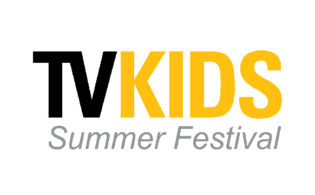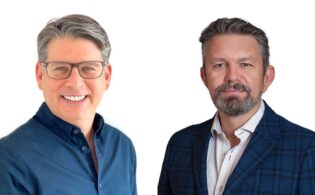In the second part of the TV Kids Summer Festival super session on the AVOD business, Jetpack Distribution’s Dominic Gardiner and Xilam Animation’s Charles Courcier discussed the challenges and opportunities in partnering with ad-supported platforms for kids.
The segment with Gardiner, CEO of Jetpack, and Courcier, senior VP of digital production and distribution at Xilam, followed a conversation with WildBrain Spark’s Jon Gisby and Roku’s Ashley Hovey on how they are working with content and brand partners. The panel was moderated by TV Kids’ Kristin Brzoznowski.
Read excerpts of the session below and watch the entire video here.
“AVOD for us has been growing quite dramatically over the last two to three years,” Gardiner said. “One might argue we’ve been a little slow to get into the game. We’re taking a much more proactive approach now.”
Xilam has had a YouTube presence for quite some time, Courcier said. “Xilam capitalized on that platform at the very beginning. The main problem was that TV broadcasters were not very happy about having their properties on an ad-supported and free platform. We decided to continue, and it soon became a very important revenue stream for us, 20 to 25 percent of our overall distribution department. But it was the only platform we were on. When we saw the monetization drop looming in 2019, we doubled down on AVOD. That’s when we said we should go on other AVOD platforms.”
The AVOD platforms are largely working on a revenue-share basis, Gardiner added. “It is always nice to have cash upfront or an MG; it’s a preference, but we appreciate that a lot of these new platforms are taking a lot of risk in their investment in technology and they are often growing audiences from zero. It’s important for us as content providers to be good partners and be understanding that they don’t have budgets for license fees. What we do see is that users are growing, the views are growing, and in the world, digital marketing is growing quite dramatically. As the ad dollars start going up and the users migrate to these platforms, I think we’ll see an increasing return on the revenue side.”
Courcier agreed, noting, “With the biggest platforms, you usually get a symbolic MG, as we like to say. Xilam is producing content for TV broadcasters. We can’t compare the fees that a TV channel can pay for a territory and an MG. Sometimes we just ask for an MG to be sure the platform is committed to putting forward our content because they will need to recoup that. But the war is in the revenue share. You can see that changing. In the past six months, we’ve had new conversations with platforms that are starting to have a real user base, and they see that when you split 50-50, for example, a lot is going to the distributor, so they’re starting to propose new deals with higher MGs and a percentage that comes down a bit. It’s up to the distributor to be sure to get what we deserve and a fair revenue share. This is changing fast. In the future, I think all the platforms will have different business models, and we’ll need to adapt.”
The conversation then moved to what factors distributors need to consider when determining an AVOD strategy. When it comes to the big platforms like Roku, YouTube and Tubi, “If you’re not one of the biggest distributors, there’s no way you can negotiate the conditions,” Courcier said. “Then, with the newcomers, you need to be sure that they will be committed to showing your content. TV broadcasters put holdbacks in different countries, so the platform’s reliability is very important to ensure the content is not broadcast in a country where it shouldn’t. That can happen. The revenue share needs to be fair. And then, what kind of content is on the platform already? Does it fit our editorial line? Do we want to see our content next to someone else’s content?”
Gardiner added, “Particularly with new platforms, you’re never quite sure what their performance is going to be. As much promise and hope that any new platform has, what they’re actually going to deliver in terms of reach, you’re never guaranteed. And what they’re going to deliver in terms of revenue, you never know until the reports start coming in. So we always like to say, let’s get on there first, let’s make sure we’re not committing forever, let’s make sure that if things don’t go the way we hope that we can get out of these deals as well. We spend quite a bit of time negotiating that just in case. Being able to be flexible is helpful for both parties. But, of course, there’s a minimum amount of time they need. This world has always been non-exclusive, so people are not asking for your best show; they’re not asking for your best show forever. But what you want from them is some commitment. How easy is it going to be for your content to be discovered? A lot of new platforms have tended to be successful with series that have always been successful on other AVOD platforms, particularly YouTube. I think we’re in a place where some of the few bits of content that have been successful on YouTube have migrated quite nicely onto other more dedicated kids’ platforms or apps. [Platforms] are growing globally. We look at that and how complicated it is for us to work with them if they are in multiple territories. And because we’re generally talking about deals that are low-ish in value, complication is the killer. If you’re having to spend a lot of time and effort once you’ve delivered and the costs of delivery, you’ve got to make sure you’re still profitable. We take all of that into consideration.”
Courcier added that Xilam has canceled deals when things became too complicated, “and we didn’t get the assurance that our content would be streamed well.”
Brzoznowski asked the panelists if AVOD will begin taking a more aggressive approach in boarding IP early as commissioners or co-producers. “I don’t see it on the immediate horizon,” Gardiner said. “I think it’s an ambition. Many of these platforms are often app-delivered or IPTV-delivered. How do they distinguish themselves? If you’re not YouTube or Roku, how do you distinguish yourself if everyone is showing the same content? Long term, it’s a margin business. If they want to be successful, they’re going to have to have a point of difference. It takes a long time to mature a business to that size, to be able to invest in content.”
Animation is expensive, Courcier added. “We usually start producing when we’ve signed three or four channels to cover at least 80 percent of our costs. It would be a huge investment for them. As they bet on volume, how can they be sure that these series will drive enough traffic to justify the investment? We could see it in the long term, but not right now. If they do, it won’t be commissioned; they’ll create the content themselves.”
“That model of self-producing is done at a much lower budget than the producer typically does for free or pay TV,” Gardiner added. “One of the trends we’ve seen is the rise in popularity of series which are done on much more economical budgets than companies like Charles’ have been doing. Low-budget series are becoming globally successful. We’re entering into a phase where we have some series that are breaking records for how high the budgets are, but at the same time, at the other end, we’re seeing shows delivering millions of eyeballs done on what we would call a shoestring budget. AVOD has maybe changed viewers’ perception of what is good quality or not good quality. The budget isn’t the only determining factor.”
On the role AVOD will play within Jetpack’s business, Gardiner said, “We plan on it being a much bigger piece. We’re getting much more involved in YouTube than we were previously. Charles mentioned that a lot of broadcasters had not the greatest relationship with YouTube five years ago; I think that’s changing. We’re seeing shows which were YouTube-first now going not only onto free TV but also onto pay TV. It’s almost two-way traffic. We foresee growth in the ad revenues, and more platforms will spring up. We’ll see growth in other languages [outside of English]. It’s never the central part of our business, because the premium TV networks, if you will, will still generate the most [revenues], but as shows get older and our library gets bigger, we can exploit the library better. Those revenues will be important, no doubt.”
Courcier agreed, noting, “AVOD is still on the rise. The estimation is that ad revenues will double from now to 2025. So clearly, we will continue working with AVOD platforms, and it will take a bigger role in our strategy.” But, he noted, the main focus will remain “on international streaming platforms and TV broadcasters because it’s in our DNA.” If producing for AVOD, he said, “either you’re on lower budgets or shorter formats.”
Read our recap of the first half of the session, with WildBrain Spark’s Jon Gisby and Roku’s Ashley Hovey, here.
 TVKIDS
TVKIDS






